-
1784 – 1815
Company set up during the Age of Enlightenment
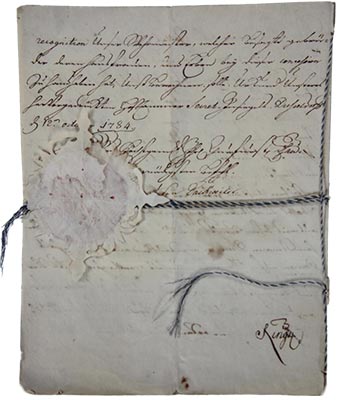
Germany at the time of the Enlightenment: unthinkable without paper. This product meets the needs of a zeitgeist marked by people’s growing desire for information
In France, the French Revolution rages after 1789. Liberty, egality, fraternity are proclaimed – a subject that merits many a commentary. And that is exactly what happens: the newspaper editorial emerges as publication form. Papermakers are rubbing their hands. However, when the liberal, equal and fraternal French occupied the Rhineland, Düren’s papermakers at least stop rubbing hands – and shake their heads.Düren is occupied in 1794: the French stay for 20 years.
The need for paper, already ballooning on account of the Enlightenment and many political proclamations, is now given another boost by the numerous ordinances which announce the “will of the people” to the people.
In 1796, SCHOELLERSHAMMER is already processing 134 t of rags a year. In 1804, 60 people using 6 vats make superb fine papers. This turns the hydropower-operated papermill into one of the biggest papermakers in the region.
-
1815 – 1857
From craft enterprise to industrial undertaking
The French Revolution results in far-reaching social changes. The social group shaping events in the state is no longer that of princes, but a citizenry boasting growing self-confidence.
It is joined by a new group: the up-and-coming families of factory owners and powerful merchants. At that time, referred to today in Germany as the Biedermeier period, the idea of the Bildungsbürger, or educated citizen, evolves, and there is talk of universal education. Most of Europe’s traditional book-publishers get started during this time. The demand for paper explodes on a scale not previously thought possible.
Nascent industrialization also seizes the papermills in the Düren region. Two competitors have already set up modern paper machines. Alas, both go bankrupt over the investment.
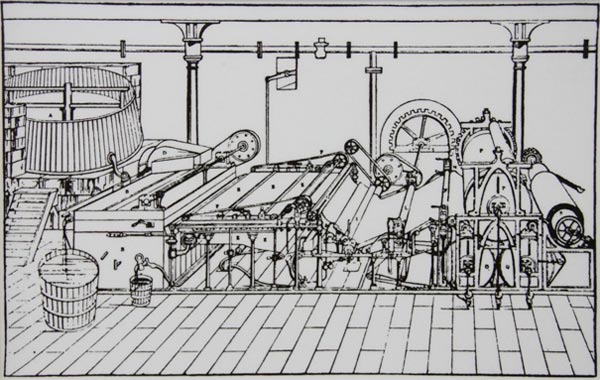
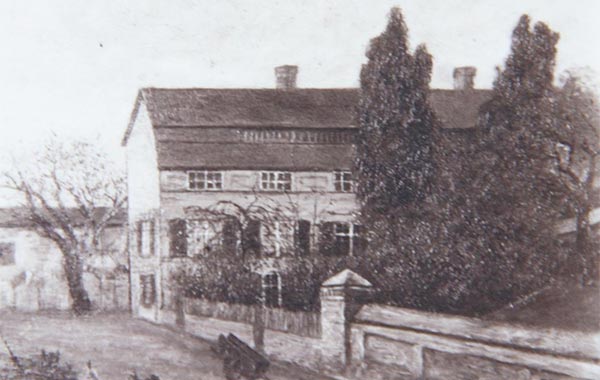
Heinrich August takes his time. You don’t install a big paper machine as if it were a new cupboard. It is a move that has to be well considered. You will need a new water conduit, the water wheels themselves must be enlarged, and a third one installed.
Bryan Donkin, paper-machine builder from London, comes to Düren for in-depth personal talks about necessary technical innovations. Finally, in 1841, the day arrives: Heinrich August buys a Donkin paper machine and starts the “fabrication of paper without end”.
The result: in 20 years, Heinrich August Schoeller has turned his papermill into an industrial undertaking. Paper pulp is no longer stirred by hand, but prepared by machine. Paper is made using self-generated steam power and in continuous rolls.
-
1857 – 1908
Growth years in the "good old days"
And they really were the good times.
They exist not only in our nostalgia and imagination. “Gemütlichkeit”, the cozy atmosphere that Germans love, emerges around 1820 and lasts until the end of the 19th century. Men meet to talk in inn and tavern; and there’s the tobacco pipe.
People are modest, and life is easy-going. Many of our picture-postcard motifs stem from this time. The good furniture craftsmanship of the Biedermeier era feeds antiques dealers down to this very day.
Technical progress is making life increasingly convenient.
Paper consumption and the desire for genuine fine papers is skyrocketing. The Benno and Julius Schoeller brothers, together with Ernst Grebel, make the most of it.
The mill is proud above all of the numerous international awards received for the excellent quality of the papers:
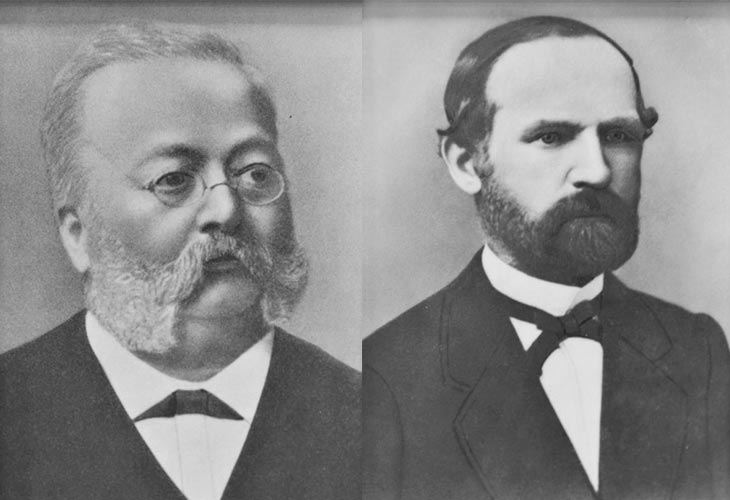
1844 SCHOELLERSHAMMER wins the silver medal of the German Confederation at the Berlin trade fair.
1855 the SCHOELLERSHAMMER papermill is again awarded the silver medal for machine papers using animal glue.
1862 successful presentation at the London exhibition of industry and art.
1867 the following grades are shown at the Paris World Exhibition: drawing, parchment, postal, writing and coloured silk papers, as well as board. The reward is a gold medal for Düren.
1873 at the Vienna World Exhibition
1880 in Melbourne and
1900 in Paris, the papers of SCHOELLERSHAMMER meet with praise, recognition and buyers.
-
1908 – 1930
War and world economic crisis
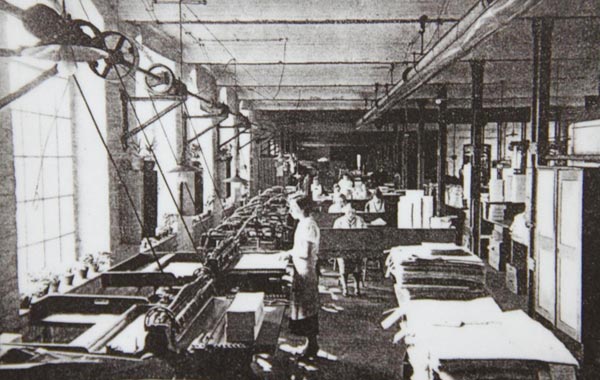
For 43 years (since 1870/71), peace has reigned in Europe. And although no war can bring the assassinated heir to the throne back to life in Sarajevo, the two emperors, Franz-Joseph of Austria/Hungary and Wilhelm II of Germany, go to war anyway adding many more dead to the body of Archduke Franz-Ferdinand. And burying Europe’s old order.
Apart from America, which has lent money to the whole world and now earns interest, this war has no winners. Everyone’s a loser. Germany is bled-out, impoverished and ruined due to insane reparations. France is destitute. Austria/Hungary no longer exists. Russia gets bogged down in the chaos of Revolution.
When Dr Richard Rhodius and Robert Schoeller return from the war in 1918, the French are back again in Düren as occupiers. In economic terms, not much is happening, although WWI did not bring the severe devastation left by WWII later on.
What is bad is the money. The people producing it are the separatists. Their aim is to turn the French-occupied Rhineland into a separate republic. So, a Rhenish currency is printed. But people don’t want the republic. Nor do they want the separatist money. At times, the works management has to obtain Reichsmark from British-occupied Cologne in order to pay its workers money with the necessary buying power.
Although the Rhenish republic is proclaimed in 1923, it fails due to popular resistance. One dollar at that time costs 40 billion Reichsmark. These are conditions that cause businessfolk huge headaches. They must keep production going, develop new products, defend market share and – where possible – expand it.
-
1930 – 1950
Surviving disaster
The circumstances that brought Hitler to power are well-known: after the Great Depression of 1929, 6.1 million people are out of work and 20 m million on the bread-line. Still, life must go on at the mill.
The managing directors of SCHOELLERSHAMMER, Dr Richard Rhodius and Robert Schoeller, succeed in keeping the Company afloat. In 1934, – the world economy is reviving – the Company becomes reasonably profitable again. The sixth generation takes the helm and invests in the expansion and improvement of fine papers.
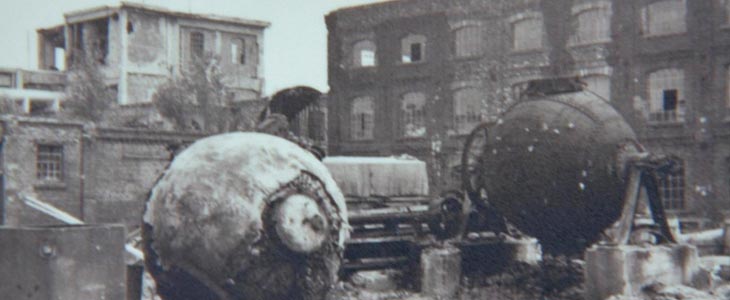
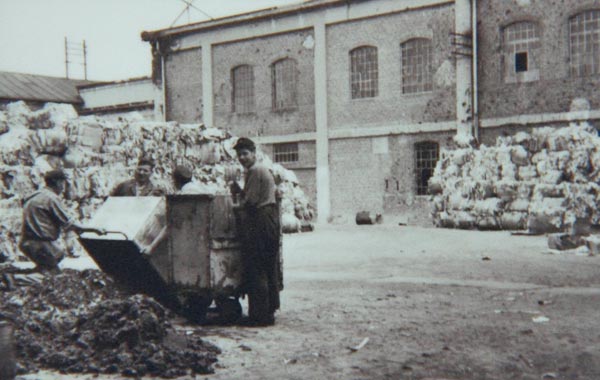
Peaceful developments are disturbed more and more by the political ambitions of the Third Reich. German “workmanship” now goes into the production of war material. War commences in 1939. It will last until 9 May 1945, 00:01 hrs.
Up to 1944, the fine-paper factory SCHOELLERSHAMMER sells paper. Above all photographic and map papers. 1944 witnesses what is probably one of the most devastating air raids on a German town: Düren is almost entirely destroyed. -
1950 – 1973
Reconstruction and economic miracle
The nascent Federal Republic of Germany creates its own economic-policy roadmap in the 1950s. Economics minister Prof Ludwig Erhard manages an economic miracle and, with confident steps and impressive eloquence, creates a social market economy that will last. Politically and economically, the world starts to recognize and accept a new Germany. Foreign trade takes off and soon yields surpluses. The paper industry adapts elastically to changing markets and dares to float ventures that pay off.
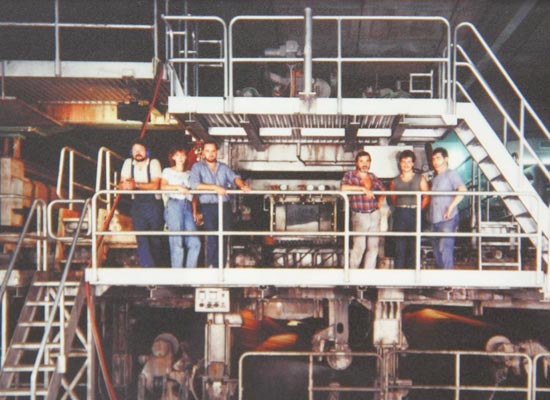
In the 1950s, SCHOELLERSHAMMER faces the problem that, on price grounds, high-quality fine paper is finding no takers. The management, Mr Robert Schoeller, Dr Richard Rhodius and Mr Heinrich August Schoeller, find a way out of this predicament. It is a way that will later prove to be a winner: the PM III fine-paper machine is used to manufacture currogated board base paper. In the fine-paper area, SCHOELLERSHAMMER spots opportunities in gaps in the market and sets out step by step to exploit these with new products. In 1956, a brand-new fine-paper machine is installed.
It receives the designation PM I in remembrance of the first Donkin paper machine for “continuous” papers from the year 1841. SCHOELLERSHAMMER now has a workforce of 455 again. A good half hundred more than during its best pre-war times. Paper machine III produces corrugated board base paper. With it, SCHOELLERSHAMMER wins a significant slice of the market. The capacity of PM III eventually reaches its limits. A new machine is needed. It is commissioned in 1961 as paper machine IV and, with a working width of 4.30 m, is one of the most modern machines of its kind in Europe.
-
1973 – 2000
Structural change and globalization
In 1973, a renewed switch in the production of corrugated board base paper became necessary, since the corrugated-board industry is moving from 2.20-m-wide processing machines to 2.45- or even 2.65-m-wide machines. Simply dispensing with the packaging industry as customer, or only retaining those customers who still work in old widths, is no option for SCHOELLERSHAMMER. So: the new paper machine V has a working width of 5.00 m and an output of more than 300 t per day.
Whereas it was necessary between 1950 and 1973 to adapt the mill’s capacity to rising demand, the problems are now the other way around: there is more capacity than the demand can use. What’s more, the initial catch-up demand of a destroyed country is now covered. Owing to the raw-material situation, manufacturing, too, is becoming expensive. Sales are stagnating. All of a sudden, saving is back on the agenda. Not altogther a bad idea. Ludwig Erhard called for it a lot earlier. But like many people who give warnings in good time, all he earned was a laugh or two.Now, with the ubiquitous need to stem the flow of red ink, no one’s laughing any more. “Cost-cutting” is the name of the new game, and that’s no joke. Fine-paper machine II and corrugated-board machine IV are switched off and sold. Fine-paper machines I and II and corrugated-board machine V are improved so that the three paper machines can produce more than the former five.
The trend is toward an economic system that is networked worldwide, one that we know all too well under the buzzword “globalization”. Starting at the turn of the century, this trend becomes ever-more important for SCHOELLERSHAMMER, since it benefits the corrugated-board industry. It enables the firm to tackle the costly expansion of the corrugated board base paper production lines.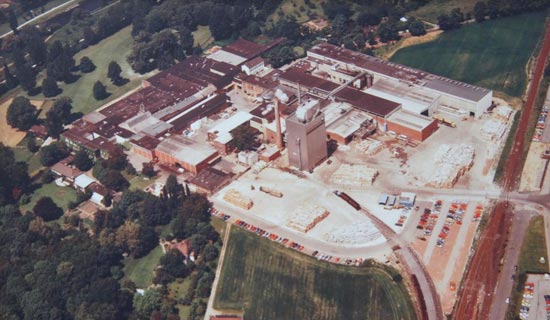
-
2000 – today
Social change and digitization
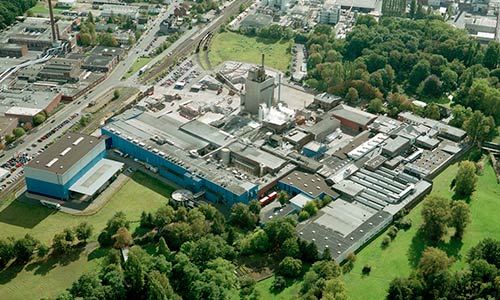
Around 40 years ago, the computer starts its triumphal march. After technical automation, it takes the “World Wide Web” to unleash a cultural revolution. Old communication ways are left behind: instead of writing letters, we exchange emails, texts or WhatsApps. The fine-paper sector is facing relentless restructuring. The same is true of specialist retailers. The internet is opening up new marketplaces, and trade on the internet is booming, boosting the need for packaging.
SCHOELLERSHAMMER is affected by both these changes. Over the years, the fine-paper segment loses massively in volume and is shut down in 2015. However, the steady rise in the need for packaging is opening up growth opportunities in the corrugated board base paper field. In the summer of 2015, after years of preparation, a decision is taken in favour of building PM 6. This grows the location from 230,000 t per year to over 500,000 t. Thanks to the investment, SCHOELLERSHAMMER manages to shape most of the structural change in a largely smooth fashion for the workforce.
